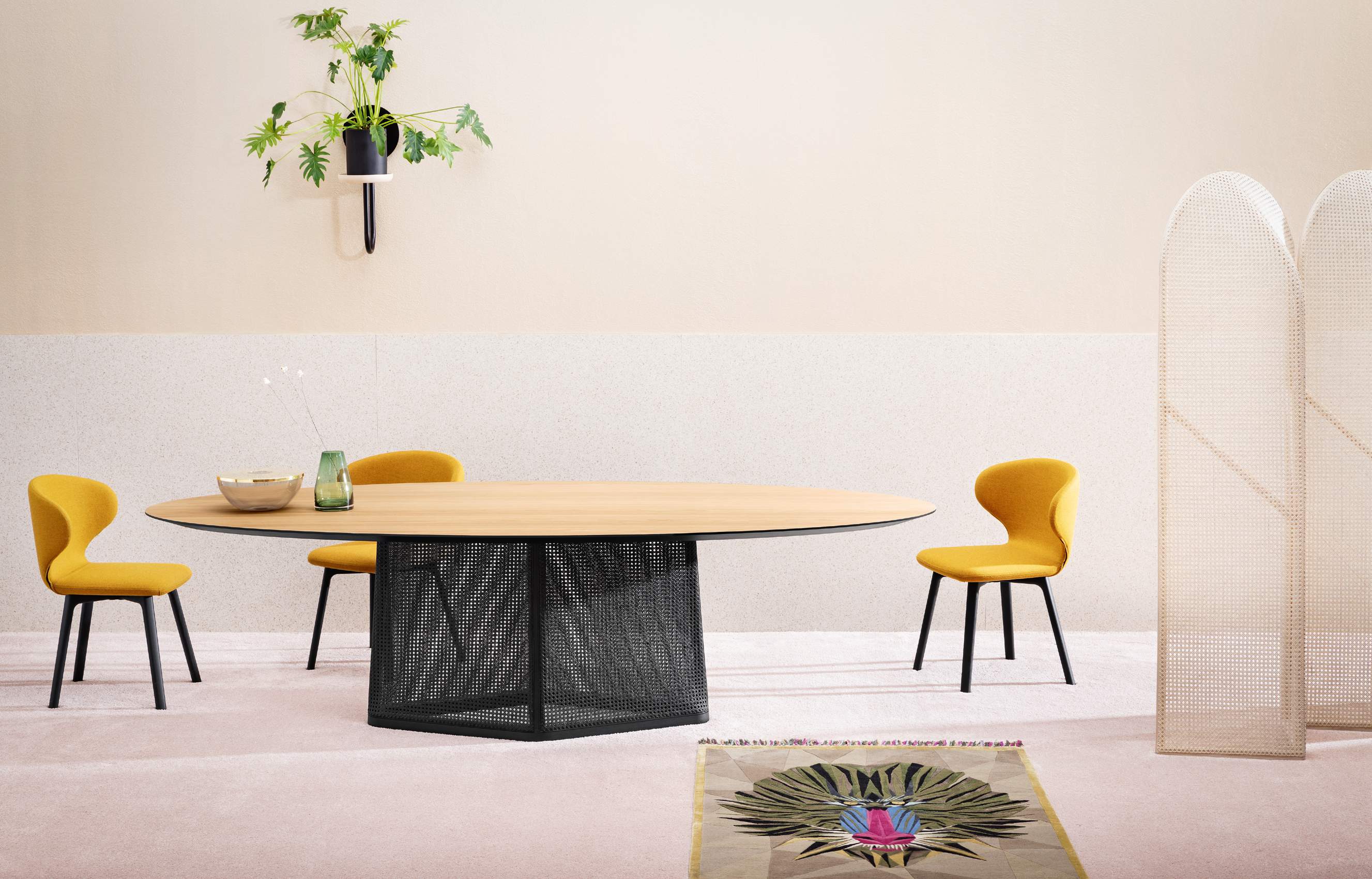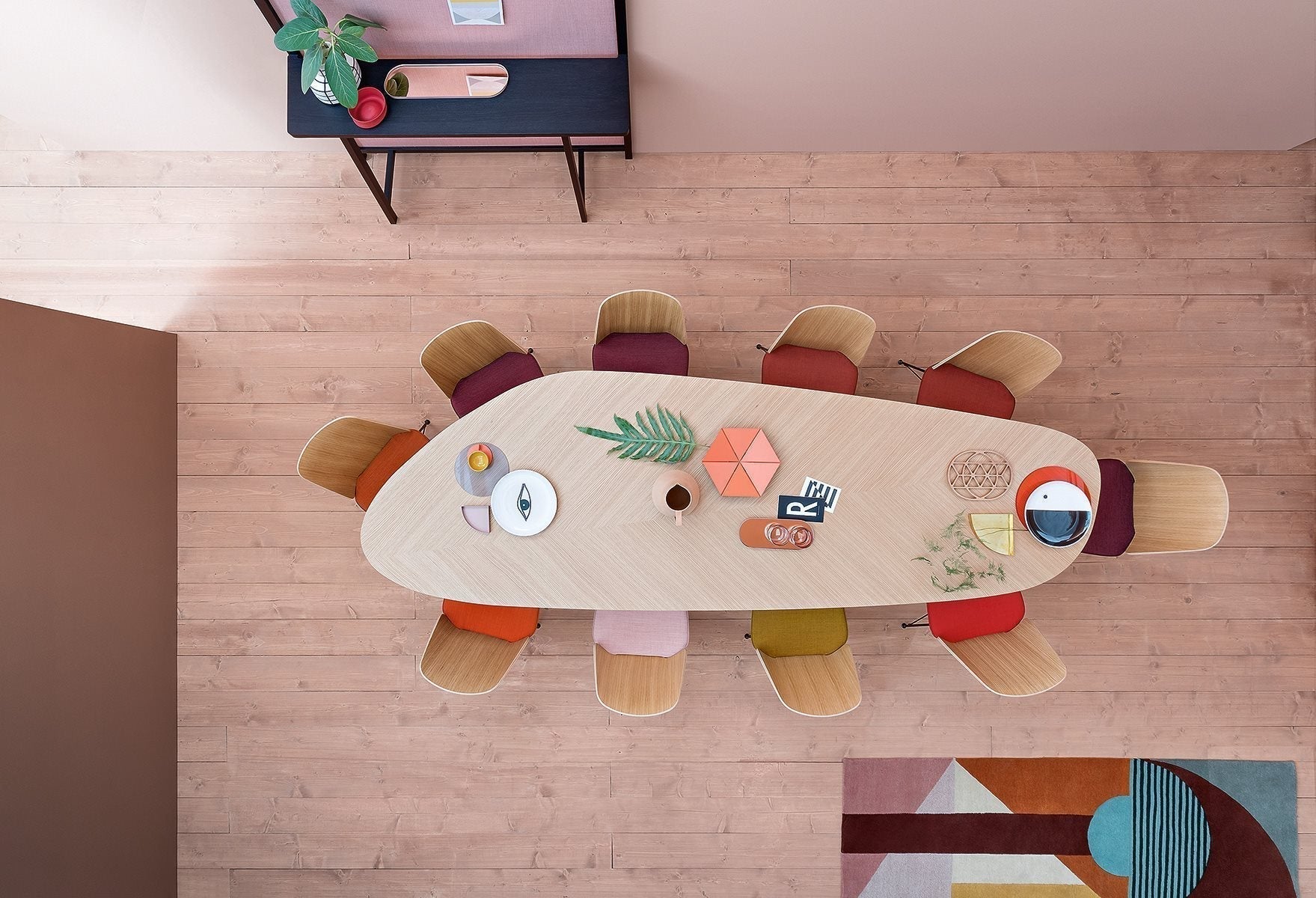
What's the Perfect Seat Height? A Guide to Modern Stools and Dining Room Chairs
The Ultimate Height Guide for Modern Chairs and Stools
In the quest for the quintessential interior, the difference between an inviting dining area and a cozy modern living room often boils down to one crucial detail: seat height. Navigating the many seating options available, from modern stools to classic dining room chairs, requires more than a keen eye for design; it necessitates a fundamental understanding of seat height and its impact on comfort and functionality.
Standard seat height varies widely depending on the intended use of the seating in question, with counter height bar stools and bar height bar stools each adhering to their own norms. This guide doesn't merely skim the surface of proper seat height across an array of seating options; it delves deep, offering double the detail on everything from lounge chairs and sofas to dining chairs and beyond.
Lounge Chairs and Sofas: The Pinnacle of Personal Comfort
Lounge pieces embody comfort, but did you know their appeal partly lies in their seat height? Typically, lounge chairs and sofas hover around the 17-18 inch mark, though variations exist from as low as 15 inches to as lofty as 20 inches. The perfect seat height here is somewhat subjective but heavily anchored in ergonomics.
When it comes to lounge seating, seat height is more important than most people think. In our experience, the rule of thumb is simple: your feet should rest flat on the floor and your knees should bend at about 90 degrees. That posture supports your back and makes long sits more comfortable. The most common feedback we hear is about how much easier it is to get up from a chair when the seat isn’t too low. If you ever find yourself pushing off the arms just to stand, the fix might be as easy as choosing a slightly higher seat, and it makes a huge difference.
How to Choose the Right Height for Lounge Chairs
- Standard Height: 17-18 inches from the floor to the seat.
- Variation: Heights can range from 15 to 20 inches depending on personal preference.
Key Considerations
- Ergonomics: When seated, your feet should rest flat on the ground, and your knees should form a 90-degree angle.
- Ease of Movement: Ensure transitioning from sitting to standing is smooth. If it's difficult to stand up, consider opting for a slightly higher seat.
Key Takeaways:
- Lounge chairs typically have seat heights between 15-20 inches.
- Ergonomics are critical: your feet should be flat, and knees at a 90-degree angle.
- If standing up is challenging, consider a higher seat.

Dining Chairs: Marrying Style and Functionality
Dining chairs aren’t just about looks. They have to work with your table, too. When selecting a chair consider the table with chairs. Most dining tables measure around 30 inches high, which is why many designers recommend chairs in the 17–19 inch range. That sweet spot keeps your knees comfortable and gives you enough clearance for long dinners without feeling cramped.
But here’s what we’ve seen over and over: no two dining setups are exactly the same. A taller table might call for a slightly higher seat, while a lower one needs the opposite. The play here is simple: measure the gap from the seat to the underside of your table. If it’s in the 10–13 inch range, you’re set. Short version: it’s worth taking five minutes to measure, you’ll thank yourself later.
Ideal Seat Height for Dining Chairs
- Standard Table Height: Dining tables are generally 30 inches tall.
- Chair Height: The best seat height for dining chairs is between 17-19 inches.
- Table Clearance: Aim for a 10-13 inch gap between the seat and the underside of the table for optimal legroom.
Key Considerations
- Table Height Variations: If your dining table is higher or lower than the standard 30 inches, adjust the chair height accordingly.
- Guest Comfort: Ensure that there is enough clearance for both petite and taller guests.
Key Takeaways:
- Dining chair seat height should range from 17-19 inches for standard tables.
- Ensure a 10-13 inch gap between the seat and the table for comfort.
- Adjust seat height if your table is not the standard 30 inches tall.

Counter Height Stools: Elevating the Kitchen Experience
The kitchen counter is a hub of activity in many homes, making the choice of counter height stools a pivotal decision. Stools do double duty: they show off design while still needing to feel good in daily use. Counters usually land somewhere between 34 and 39 inches high, so the rule of thumb is simple: pick a stool with a seat about 10 inches lower than your counter. That spacing keeps things comfortable without feeling too cramped or too stretched.
We tried it both ways, and the difference is noticeable. With the right height, you can settle in for breakfast, lean into a laptop session, or chat with friends without shifting around. Too high or too low, and you’ll feel it. Trust us, we’ve made that mistake.
Choosing the Right Counter Stool Height
- Standard Counter Height: Kitchen counters typically measure 34-39 inches high.
- Stool Seat Height: Counter stools should be approximately 10 inches lower than the counter, ranging from 24-29 inches in height.
Key Considerations
- Space Between Stools: Space stools about 26-30 inches apart, center-to-center, for comfort and mobility.
- Counter Use: Whether you're enjoying a casual breakfast or working from the counter, ensure the stool height provides ergonomic comfort.
Key Takeaways:
- Counter stool seat heights should be 24-29 inches.
- Maintain a 10-inch gap between the counter and the stool for comfort.
- Space stools 26-30 inches apart for ease of movement.

Barstools: Setting the Bar for Comfort and Style
Barstools aren’t just for restaurants. They set the tone for any space where the counter runs higher than average. Since most bars measure between 40 and 46 inches, the play here is simple: choose a stool that’s roughly 10 inches shorter. That gap makes it easy to sit, sip, and socialize without feeling perched too high or sunk too low.
We’ve tested plenty, and the most common feedback we hear is that the right barstool height makes lingering at the bar effortless. Too tall or too short, and you’ll know it within minutes, so it’s worth measuring before you buy.
Barstool Seat Height
- Standard Bar Height: Bars typically range from 40-46 inches in height.
- Stool Seat Height: Barstools should have a seat height of 30-36 inches to ensure comfort and ease of use.
Key Considerations
- Legroom: A 10-inch gap between the stool seat and the bar provides ample legroom.
- Spacing: Keep stools 14 inches away from the nearest wall or obstacle to allow easy entry and exit.
Key Takeaways:
- Barstools should be 30-36 inches in seat height.
- Maintain a 10-inch gap between the seat and the bar.
- Ensure at least 14 inches of space between stools and nearby obstructions.

Measuring Distance Between Stools: A Formula for Comfort
Beyond height, the spatial arrangement of stools plays a critical role in comfort and accessibility. Stools should be spaced about 26-30 inches apart, center to center, ensuring ease of movement and personal space. Moreover, maintaining about 14 inches of clearance from the last stool to the wall or any obstruction enhances the seating experience, allowing for graceful entrances and exits.
Spacing Guidelines for Stools
- Distance Between Stools: Stools should be spaced 26-30 inches apart from the center of one seat to the next.
- Clearance from Walls: Maintain about 14 inches of clearance between the last stool and the wall or any obstruction.
Key Takeaways:
- Space stools 26-30 inches apart for comfort and mobility.
- Leave 14 inches of clearance between the last stool and any nearby wall or obstruction.
Does Seat Height Influence Comfort?
In a study examining how to objectively evaluate seating comfort, researchers analyzed 43 car seats under static conditions, focusing on static pressure distribution, load/deflection characteristics, and vibration features. They discovered a correlation between the pattern of static pressure distribution and the perceived comfort level of seats, with comfort also linked to the cushioning sensation related to both the natural frequency from vibration tests and the static spring constant from load/deflection tests. Additionally, subjective evaluations of dynamic seating comfort on a servohydraulic shaker showed a relationship with the natural frequency and transmission ratio, suggesting objective measurements can reflect subjective comfort experiences. This research, published by SAE International, contributes to our understanding of how seating designs can enhance comfort, vital for industries focused on prolonged seating environments.
Conclusion: The Art of Choosing the Right Seat Height
Choosing the right seat height isn’t just about looks, it’s about how you actually live in the space. The most common feedback we hear is that once people dial in the right height, they notice themselves lingering longer, relaxing more easily, and moving around with less effort.
In our experience, it’s the detail that ties a room together. From lounge chairs to dining tables to kitchen counters, getting that 10–13 inch clearance just right makes a huge difference. Short version: comfort comes first, style follows naturally—and when the two line up, you’ll feel it.
Overall Key Takeaways:
- Lounge chairs: 17-18 inches with ergonomic considerations.
- Dining chairs: 17-19 inches, with a 10-13 inch gap from the table.
- Counter stools: 24-29 inches, with a 10-inch gap from the counter.
- Barstools: 30-36 inches, with ample legroom and clearance from obstacles.
- Ensure stools are spaced 26-30 inches apart for comfort.
The Vital Role of Modern Seating
Selecting modern seating is a critical decision in any design project due to its profound impact on aesthetics, functionality, and comfort. A well-chosen piece can transform the visual appeal of a space, tying together sleek lines, contemporary designs, and a plethora of styles and finishes to bolster the overall aesthetic. Functionality is paramount, as the right seating can adapt to various activities, be it in a living room, office, or dining area. And let's not forget comfort—modern seating, with its ergonomic designs and quality materials, promises an inviting atmosphere that encourages relaxation and engagement.

Choosing the Perfect Modern Chairs and Stools
- Function and Purpose
Identify the primary function of the seating area. Is it a space for relaxation, dining, or socializing? The intended use greatly influences your choice, helping you focus on pieces that fulfill the required role effectively. For example, dining chairs and bar stools are designed differently, considering posture, height, and the nature of interactions they facilitate.
- Size and Scale
Measure your space to ensure the chosen chairs or stools fit seamlessly without overcrowding or diminishing the area's aesthetics. The scale of the furniture should complement the room's dimensions, creating a balanced look that enhances rather than overwhelms the space.
- Design and Style
The design of your seating should echo the overall style of your interior. Modern seating offers a spectrum from minimalist to avant-garde, allowing you to select pieces that resonate with your design ethos. Whether it’s a bold statement piece or a subtle complement to the existing decor, the right choice can significantly influence the project's visual narrative.
- Comfort and Durability
Never compromise on comfort and durability. Opt for seating that combines ergonomic features with robust materials, ensuring the furniture not only looks good but also stands the test of time. Chairs and stools that offer supportive cushioning and are crafted from high-quality materials will provide enduring comfort and style.
- Cohesion and Coordination
The selected chairs and stools should not only match each other but also harmonize with the overall design scheme of the space. This includes paying close attention to materials, finishes, and colors to forge a cohesive and visually appealing environment. A harmonious design fosters a sense of balance and unity, enhancing the aesthetic and functional appeal of the space.
Wrapping Up: The Art of Modern Seating
In the dynamic world of interior design, the choice of modern chairs and stools transcends mere functionality; it's about crafting an experience, a visual delight, and a haven of comfort. As we conclude, remember that the perfect seat height, coupled with thoughtful selection based on function, size, design, and comfort, will elevate any space from ordinary to extraordinary. Modern seating is not just furniture; it's a pivotal element that reflects personal style, meets practical needs, and transforms spaces into inviting, memorable places.
Whether it's the sleek silhouette of a modern stool or the plush comfort of a dining chair, the principles of aesthetics, functionality, and comfort guide the journey to finding the ideal seating solutions. Embrace these guidelines, and you'll not only select seating that enhances your space but also create an environment that invites, comforts, and impresses.

Frequently Asked Questions
-
Do my bar stools need to match?
Yes, choosing matching bar stools creates a unified look, especially important in homes with open floor plans.
- Do bar stools need to swivel?
It's up to you. Swivel bar stools offer ease of access, particularly with heavier models, but they do need more space between them. Consider your space and preference to decide if swivel stools are right for you.
-
Do my bar stools need to match my dining chairs and table?
Not exactly. While they don't have to be identical in style, look for a connecting detail between them, such as a similar shape or material, to ensure your decor feels cohesive and harmonious.
-
What's the best material for bar stools if I have kids?
Opt for durable and easy-to-clean materials like leather or metal, as they can withstand wear and tear from children better than cane or rush.
-
How can I decorate a super small dining room to make it stylish?
Opt for statement dining chairs or a unique pedestal table as focal points, and consider hide or geometic rugs for chic flair. A pretty centerpiece adds style and fun when the table's not in use, making the most of small spaces.
- What are some alternative seating options for my dining area that offer flexibility and can match with dining tables?
Consider benches and stools for versatile dining seating options. They not only pair well with dining tables but can also be repurposed in other rooms for extra seating, with stools sliding under the table and benches easily moved to a living room or hallway.



